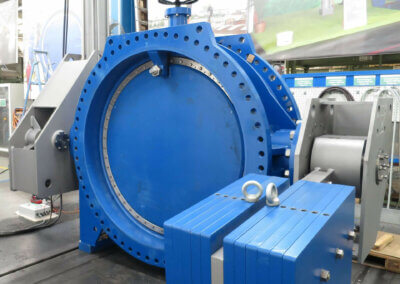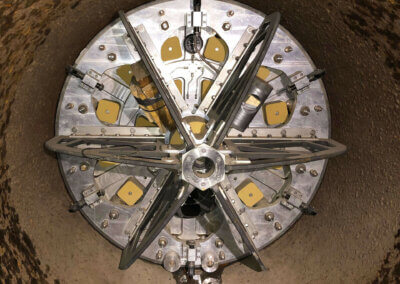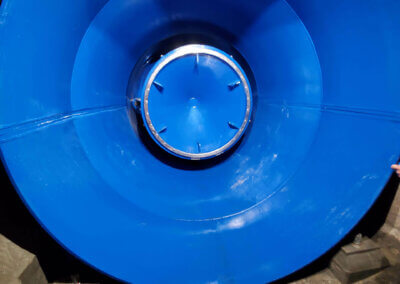About the Project
The low-level outlet (LLO) at St. Mary Dam is a 600-m long, 6-m diameter concrete lined tunnel passing through rock adjacent to the dam. The tunnel was used to divert the river during the construction of the dam in the 1940s; the tunnel entrance is now submerged 53 m below the reservoir’s full supply level.
The low-level outlet is used to discharge riparian flows into the St Mary River downstream of the dam. Riparian flows must always be maintained to provide habitat for fish and other species that are dependent on the St Mary River and to maintain water supply to downstream users. An irrigation tunnel conveys water to the St Mary Irrigation Canal which supplies water to farmers, ranchers, and local towns. The supply of irrigation water is the primary purpose of the St Mary reservoir and the lifeblood of the area’s agriculture industry.
By 2014, several valves within the tunnel were deteriorated and leaked badly. KCB was contracted by Alberta Transportation to develop concept-level options and cost estimates for replacement of the guard valves, and an energy dissipating valve. There were two guard valves, one on each of two conduits (one 1.8-m diameter, one 0.3-m diameter) passing through a concrete plug at the upstream end of the tunnel. The concrete plug was located approximately 200 m downstream from a set of trash racks at the tunnel entrance. Downstream of the 1.8 m guard valve there was a penstock that bifurcated, one branch led to a penstock for a downstream powerhouse, the other led to an energy dissipating valve, a hollow jet valve.
The work required stopping the flow of water through the LLO. In order to maintain the required riparian flows during the construction period, KCB designed a pipeline that discharges the required riparian flowrate at the base of the spillway, replacing the existing irrigation canal drain line (which was too small to supply the required flows). The new pipeline, named the riparian turnout, is a buried HDPE pipeline 1 km long.
Approach
KCB developed the methodology for replacing the valves and specifications for three tender packages: supply of the new valves, underwater work to isolate the LLO tunnel and replacement of the valves, piping, penstock etc. Once the tendering process was complete, KCB developed a detailed design, creating construction drawings for the modification to the penstocks and piping to accommodate the new valves.
A 3D sonar-based underwater survey was performed with remotely operated vehicles (ROV) to establish the conditions of the submerged section of the LLO tunnel. The survey data was used to design two isolation barriers which were to be installed, using ROVs, in the upstream end of the conduits passing through the concrete plug. A barge with a deck mounted hoist was positioned over the tunnel intake to remove the trashracks and provide a working platform for ROV operations. Once the isolation barriers were installed, the LLO tunnel was dewatered.
Work involved removing the existing valves, modifying the concrete penstock saddles for the new penstock alignment and installing rock anchors to secure the new valves in the LLO tunnel. The new valves were then installed along with new penstock sections and piping. Concrete was poured to re-instate the penstock saddles and cast a new thrust block immediately upstream of the new hollow cone valve. Work was conducted inside the 6 m diameter concrete tunnel; the only access was via the downstream end, approximately 400 m from the valve.
Results
KCB provided onsite project management and construction supervision including, scheduling of work with contractual interfaces between the prime contractors, completing monthly progress estimates for contractor invoicing and quality assurance testing. The two large diameter valves, penstock and piping were successfully commissioned, handed over to the client and have been in operation since September 15, 2020. Warranty performance of the two VAG supplied valves was completed on September 17, 2021.
Service(s) Provided
Preliminary Design and Detail Design
Project Team (Consultants)
Challenger Geomatics
Mike Spencer Geomatics
Measurement Sciences
Richard Hayward
Parkland Geotechnical Consulting
Project Team (Contractors)
VAG Group
Hibbard Inshore
Simpson Industrial Services
Go back to projects in
View other projects from
Stay in touch with us
Subscribe to our mailing list!
Organization
Connect






